Rich in traditional restaurants, copious street food vendors and uniquely local cuisine that spans centuries of historical development, food is central to Takayama and a point of pride for its locals.
Read on for the best local foods Takayama has to offer:
When it comes to Wagyu (Japanese Beef), the first thing that pops into your mind is the notoriously famous Kobe Beef. But what if I told you there was another, juicier kind of beef to rival Kobe’s undisputed reputation?
Hida Beef is the Gifu Prefecture’s answer to deliciously juicy, mouth watering beef. But you might be wondering, how does Hida and it’s internationally famous cousin, Kobe beef, differ?
Hida beef originates from the mountainous north of the Gifu Prefecture in central Japan. To give Hida beef its signature taste, black haired Japanese cattle are fattened by an accredited producer for at least 14 months. To be called “Hida Beef” the beef must receive a quality grade of 3, 4 or 5 from the Japan Meat Grading Association. This, combined with the clean spring water from the central Japanese alps contributes to the quality of Hida Beef.
As a result, Hida beef has a larger amount of shimofuri (fat marbling) than Kobe beef, making it juicer and more tender, providing a true melt-in-mouth delight for your taste buds. In contrast, Kobe beef aims for a balance between akami (red leaner meat) and Shimofuri (fat marbling).
There are many ways to enjoy hida beef in Takayama but the two most popular are Yakiniku (Japanese BBQ) and as Hida Beef Nigiri.
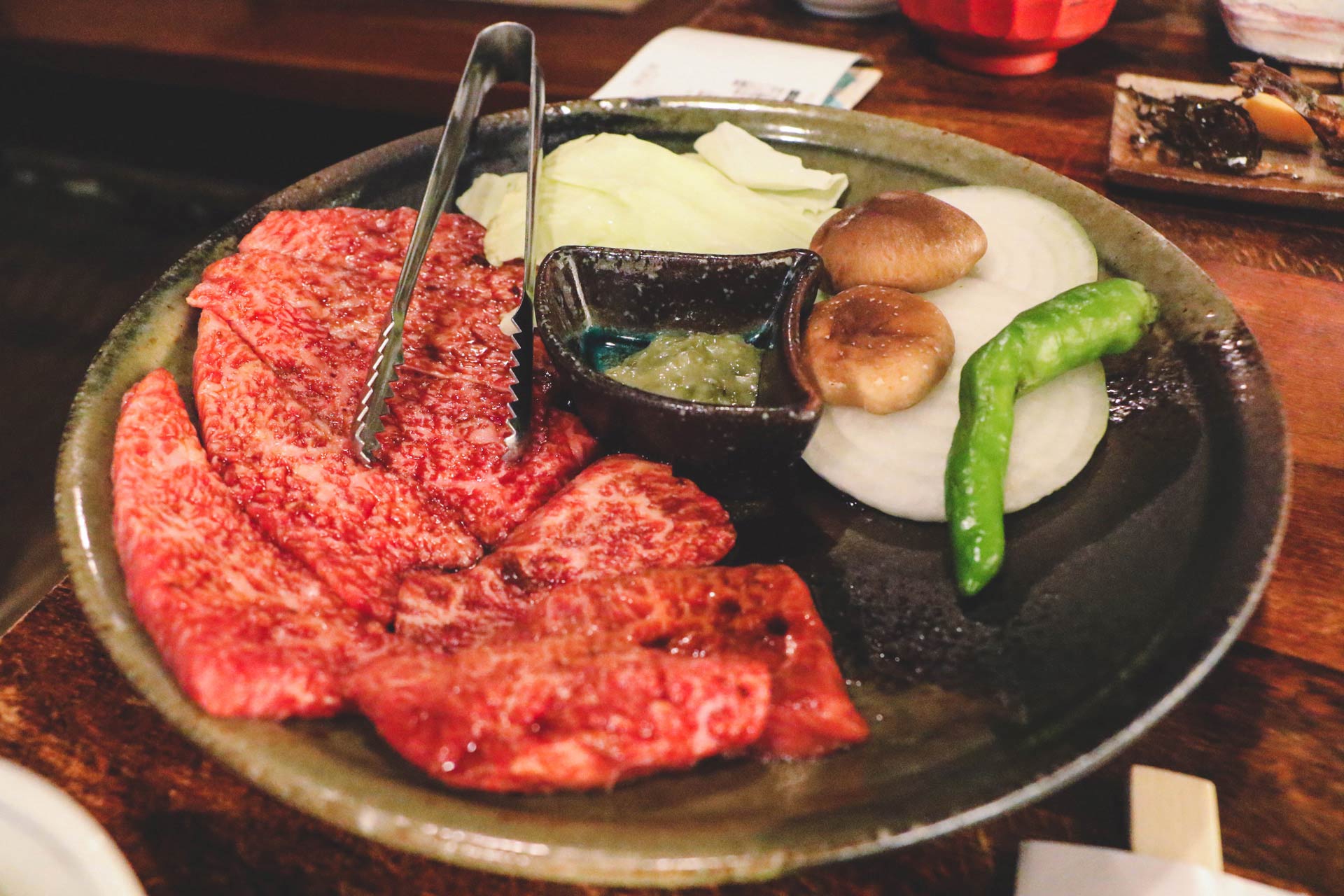
Where to Eat Yakiniku Hida Beef: Suzuya
Located in a traditional house in Takayama old town, Suzuya Restaurant has been making Takayama local cuisine since 1961. Staff are really friendly and can speak English which is a bonus.
We ordered the Amiyaki Teisyoku, which was a set meal of high grade hida beef that came with rice and soup. The beef is cooked in front of you on your own personal charcoal BBQ.
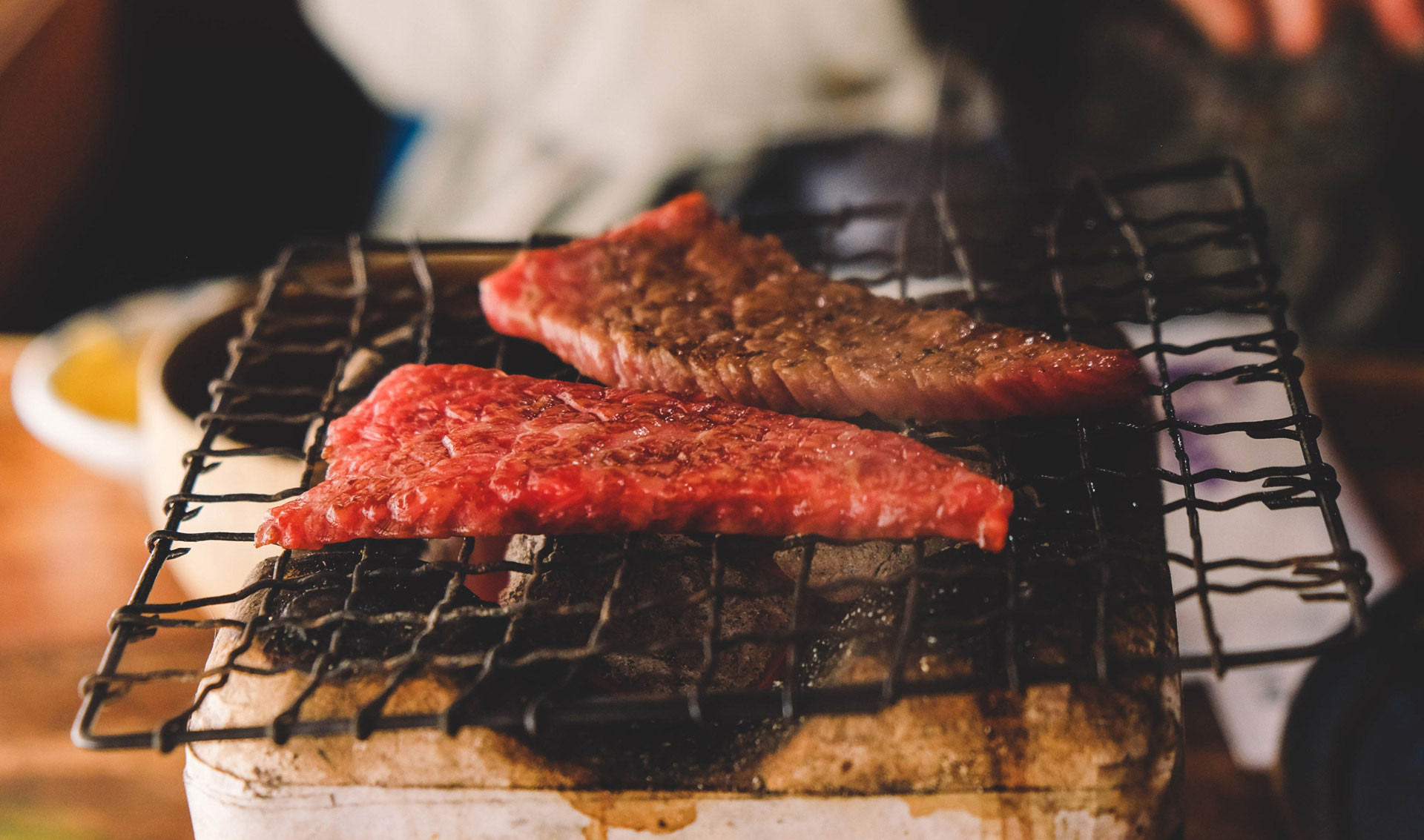
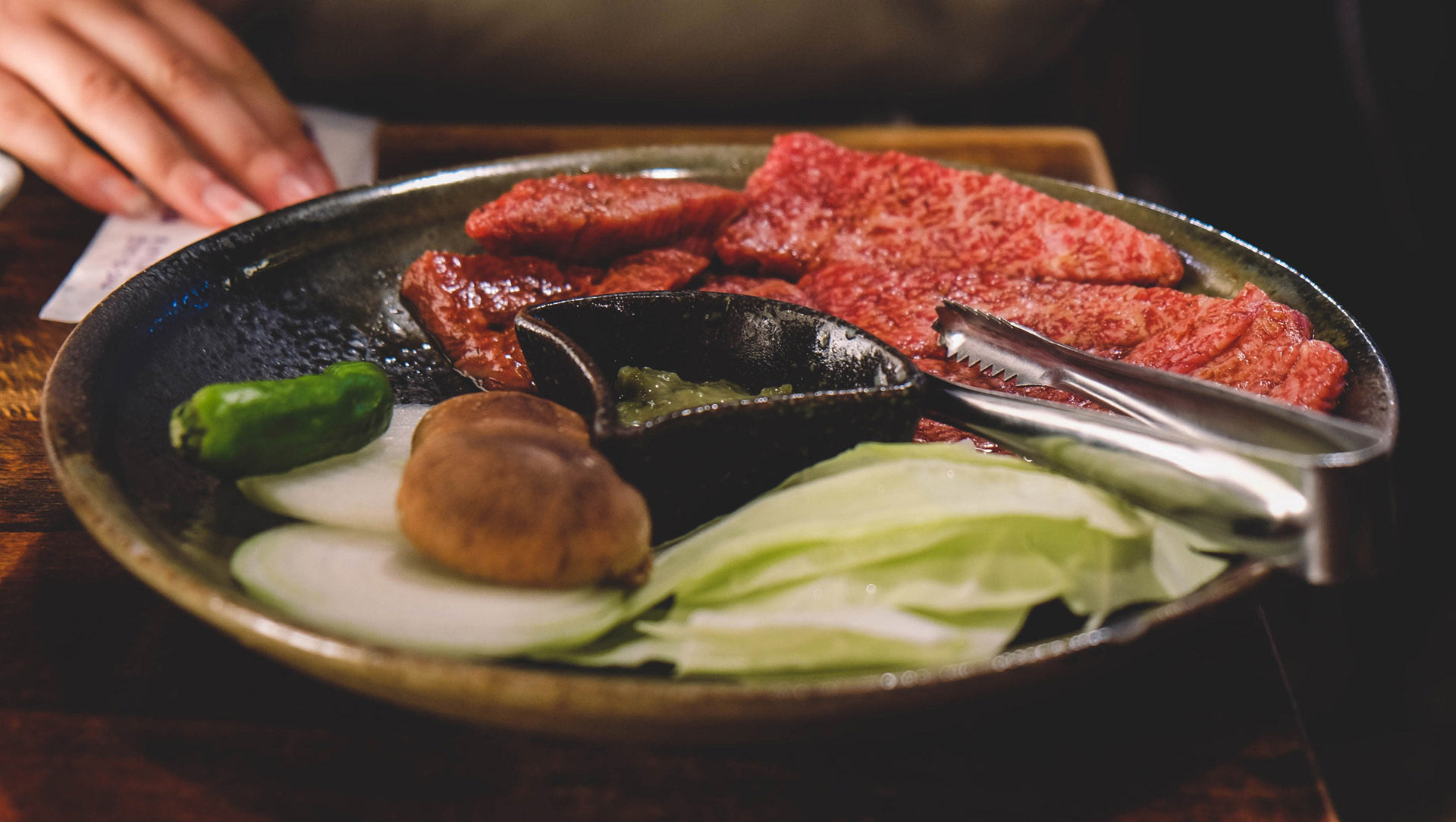
Amiyaki Teisyoku: ¥3850
Where to Eat Hida Beef Nigiri: Sakaguchiya
With an impressive history, Sakaguchiya Restaurant was originally an inn that first opened its doors in 1907. Renowned in the area, many high prfile guests stayed there including the brothers of Emperor Heisei. In the mid Showa period, the inn opened a small sweets shop at the front of the building which was very popular among travelers in the Takayama area. It wasn’t until 1983, that the owners reinvented the inn as a restaurant and opened Sakaguchiya, selling local cuisine using local ingredients.
Pioneering the idea for the Hida Beef Nigiri, Sakauchiya serves their nigiri on a giant senbei (rice cracker) making it the ideal street food as you journey through Takayama old town. You can order your Hida Beef Nigiri cooked as you like (rare, medium rare or well done) and then eat the rice cracker after! A convenient and a zero waste solution.
Depending on how much you want to spend, you can also order different hida beef grades:
- Akami Nigiri Sushi – 500yen
- Hida Gyu Nigiri Sushi – 700yen
- Hida Beef Premium Sushi – 900 yen
We tried both the Hida Gyu and the Premium hida beef sushi and we say go for the premium, where you’ll really get a sense of how tender and delicious hida beef can be. Don’t bother with the Hida Gyu.
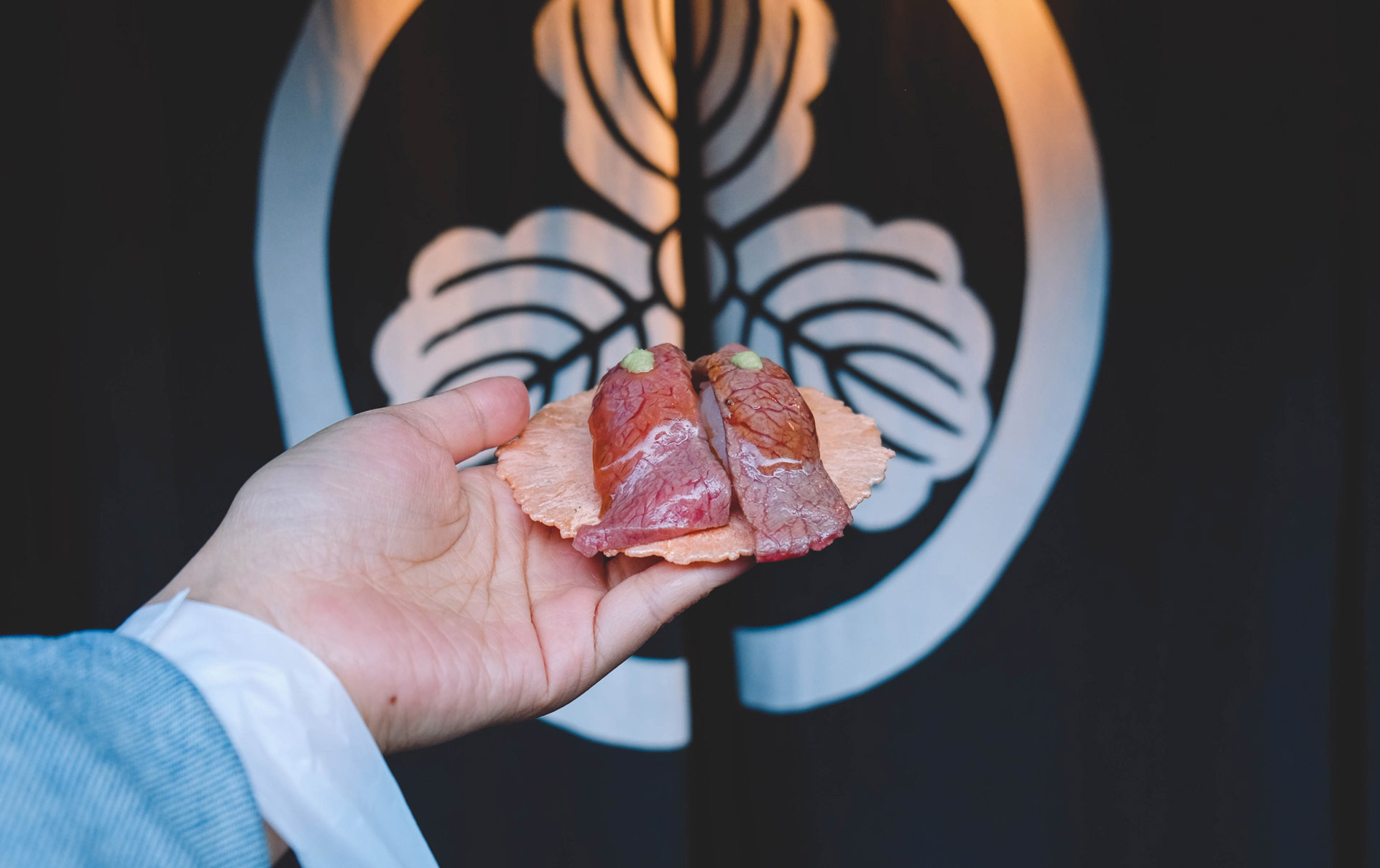
A regional dish of the Gifu Prefecture, Houba miso involves cooking sweet miso with onions and other veggies such as shiitake mushrooms, on a houba (Japanese magnolia leaf) and cooked over a charcoal fire.
With its origins as a humble dish eaten by farmers during winter, houba miso was traditionally eaten as an accompaniment with rice due to the lack of food available during the colder months.
In more modern times, houba miso is most famously cooked and served with Hida Beef and is a definite must-try dish in Takayama – it is absolutely divine!
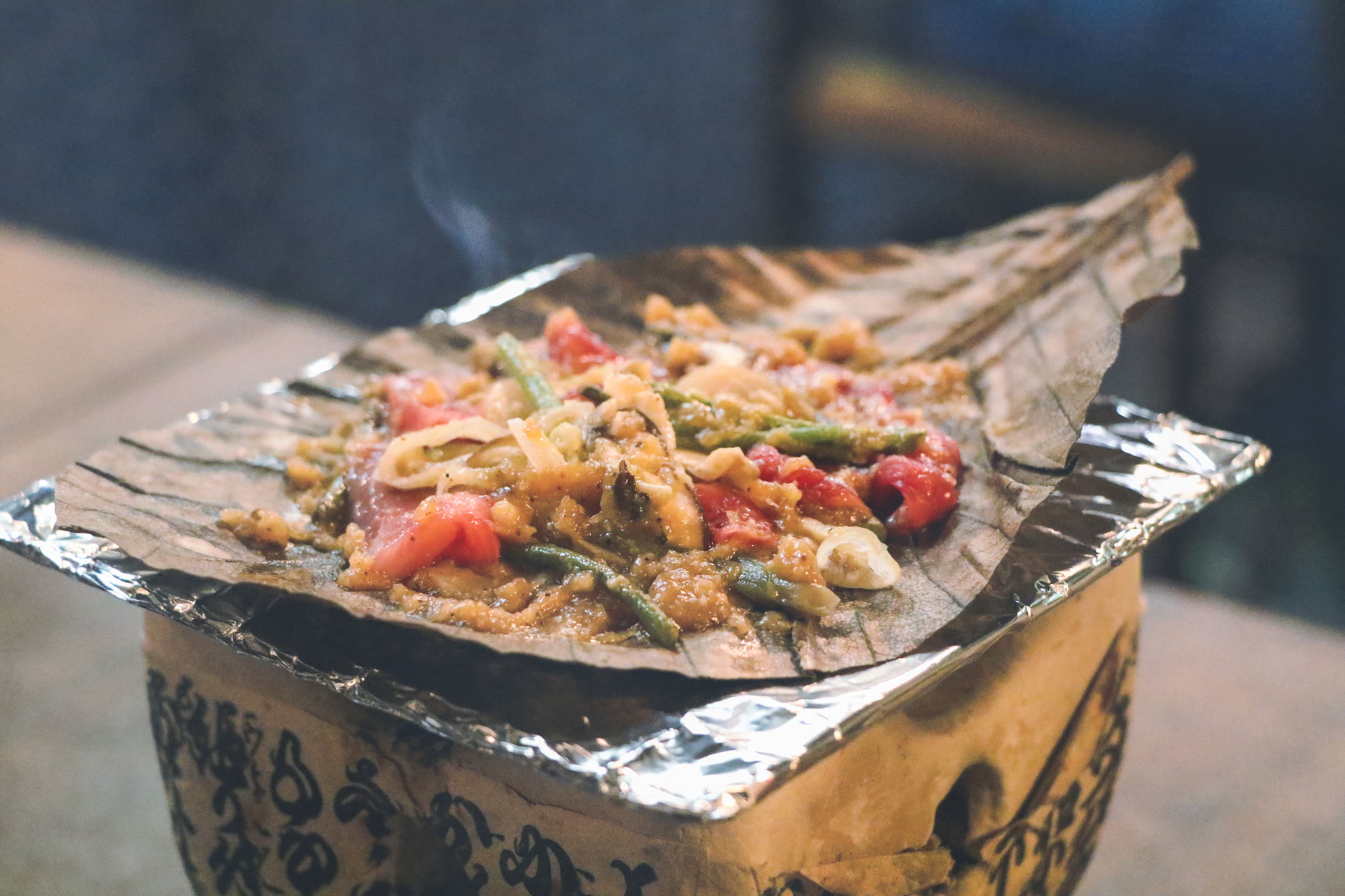
Where to Eat Houba Miso: Hidatakayama Kyoya
While we also tried Houba Miso at Suzuya Restaurant, the one at Hidatakayama Kyoya was a clear winner! Their houba miso was absolutely delicious and the perfect balance between sweet and salty. A definite must-try!
The restaurant is located in a restored Japanese country house that features traditional mid-19th century architecture, including exposed ceiling beams, tatami flooring and wooden lattice partitions. For more, read our full Hidatakayama Kyoya review.
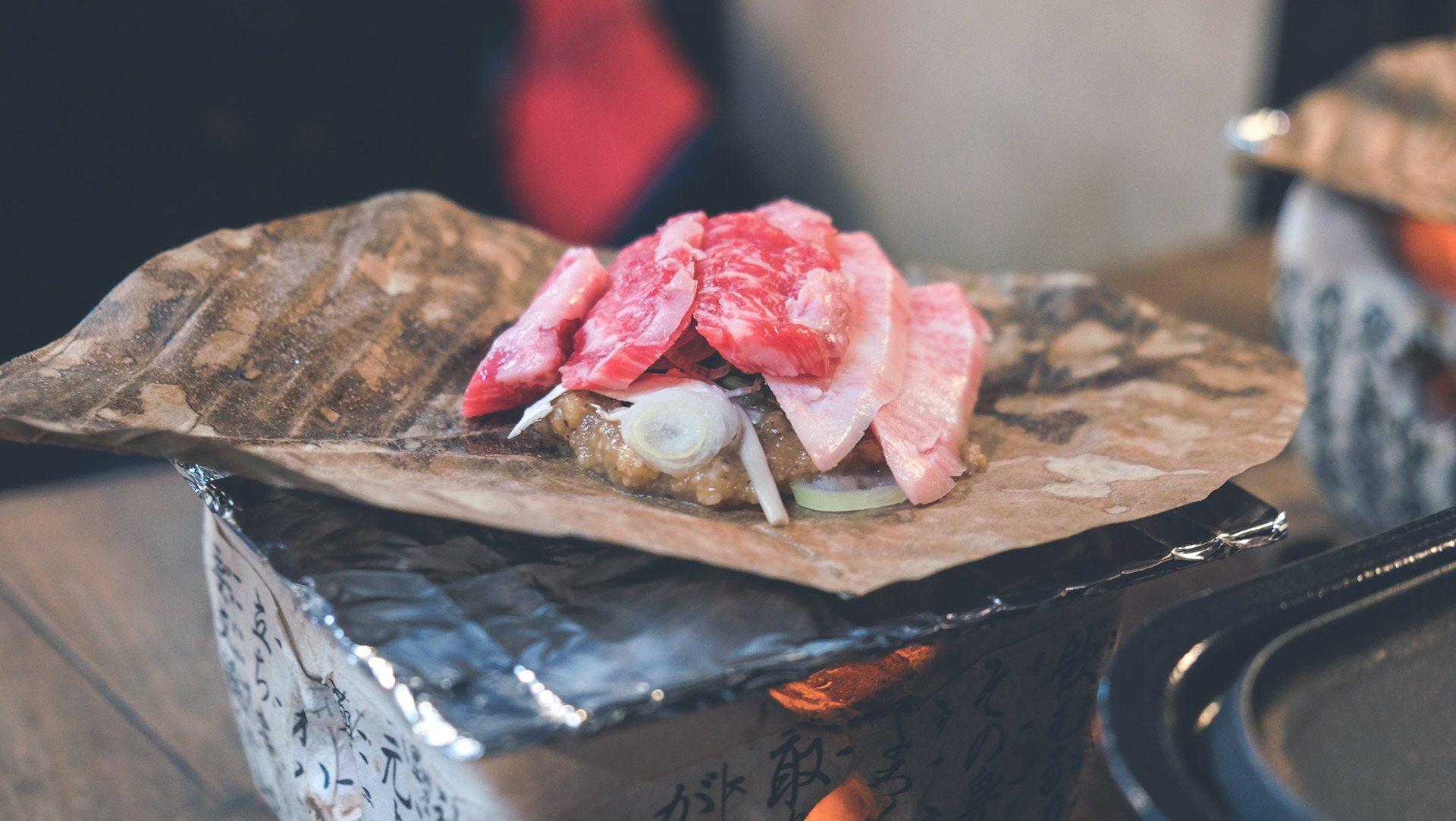
Houba Miso Set Meal: ¥2000
While soba is a Japanese noodle dish available all around Japan, what makes the soba at Takayama unique is that the area boasts the perfect climate conditions for producing top quality soba noodles.
With Takayama’s location being among the Japanese central alps, the cold temperatures and fresh spring waters from the surrounding mountains, makes it the perfect climate for producing it’s highly acclaimed soba noodles.
When ordering soba noodles from Takayama, we recommend you go for the dishes that also highlight the area’s local food, such as wild mountain veggies, hida beef or amago (mountain trout, local to the Gifu Prefecture).
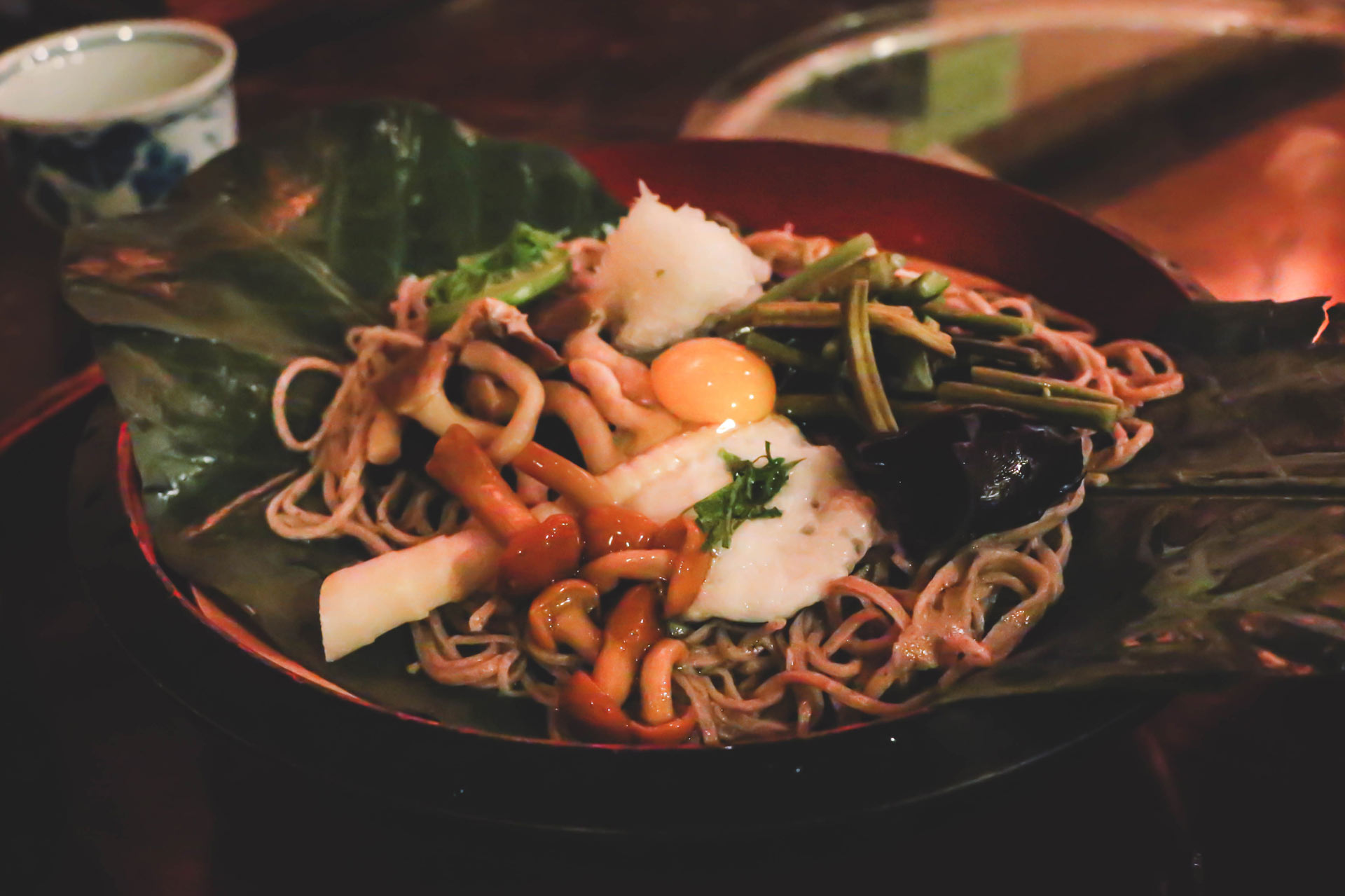
Sansai Zaru Soba: ¥1350
Where to Eat Handmade Soba Noodles: Sumikyu
This restaurant caught our eye because of its status as a Michelin 2019 recommended restaurant in Takayama. Sumikyu have been hand making their soba for 4 generations! Soba noodles are prepared fresh daily and the restaurant closes as soon as the day’s soba is sold out! So get in quick. Between us, we tried both hot and cold soba.
The Sansai Zaru Soba, is a Michelin recommended dish at Sumikyu and was definitely a beautiful dish to behold.
Served cold, the soba noodles are presented on a large magnolia leaf and topped with a variety of traditional mountain vegetables local to Takayama and the Gifu Prefecture: fern, a variety of mushrooms & fungi, bamboo, greens, radish puree and a raw quail egg. To eat, mix together and then dip into the accompanying dashi sauce.
The Amago Soba, was also a delicious standout and featured a whole amago fish which was very sweet, wild mountain mushrooms and soba noodles in a hot and flavourful broth. Delish!
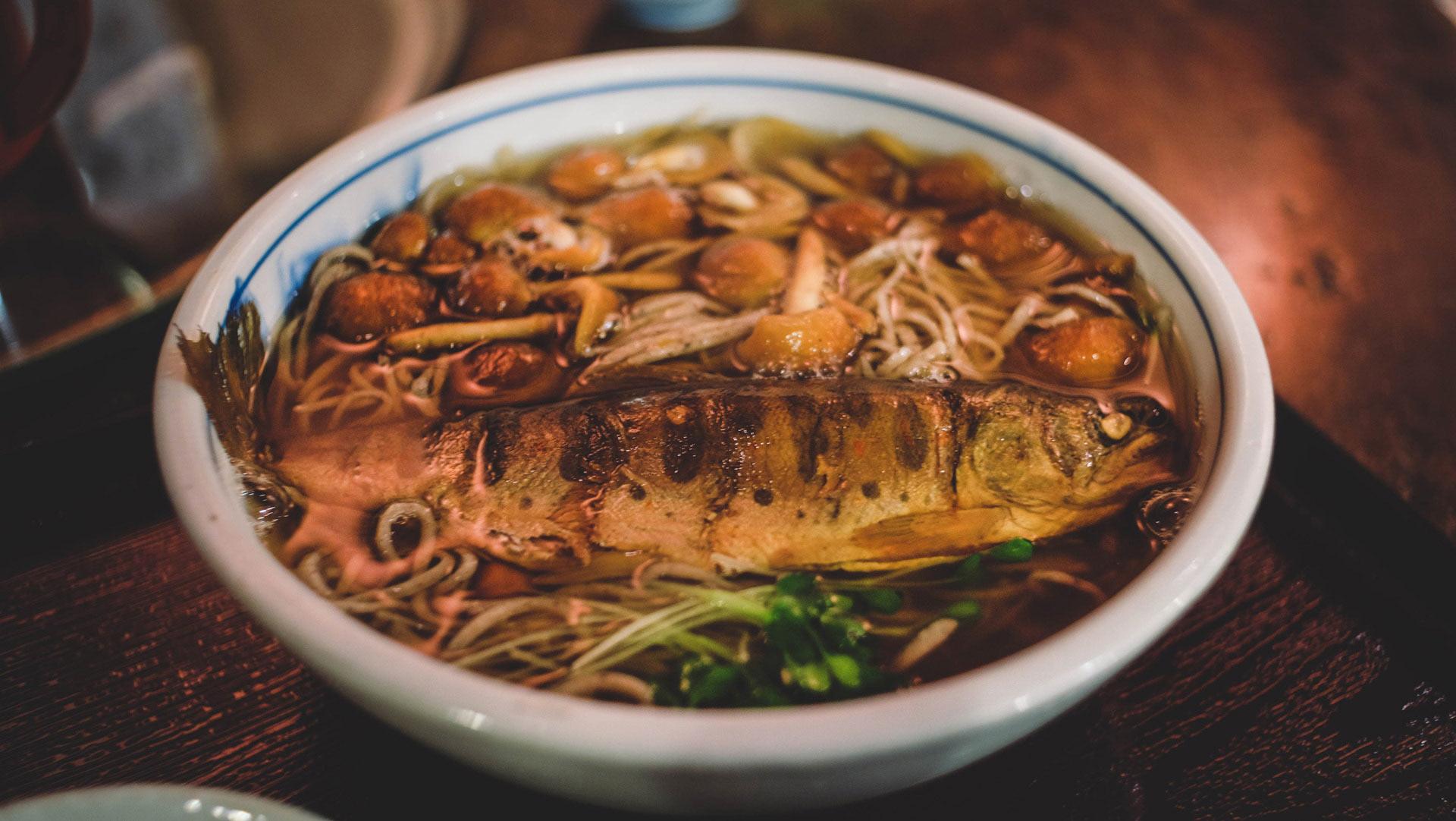
Amago Soba: ¥1450
Popular all over Japan, Mitarashi Dango is a sweet street food made by skewering round mochi on a stick and coating it in a sweet sesame sauce. Takayama however, serves its mitarashi dango differently.
In Takayama, Mitarashi dango is a savoury snack. Instead, the mochi is glazed with a savoury soy sauce and grilled over a hot fire. It is thought that this savoury version of dango is one of the very first preserved foods eaten in Japan, dating as far back as the Heinan period (10th century).
The second snack food, Gohei Mochi, is a very old and traditional Japanese snack, local to the Gifu prefecture. It is high calorie and rich, consisting of a pounded lump of white rice, skewered on a stick, dipped in a sweet walnut miso paste and grilled over an open fire. In Japan’s more historical times, Miso provided local farmers and people with a great source of warmth, comfort and important nutrients during Takayama’s long winters.
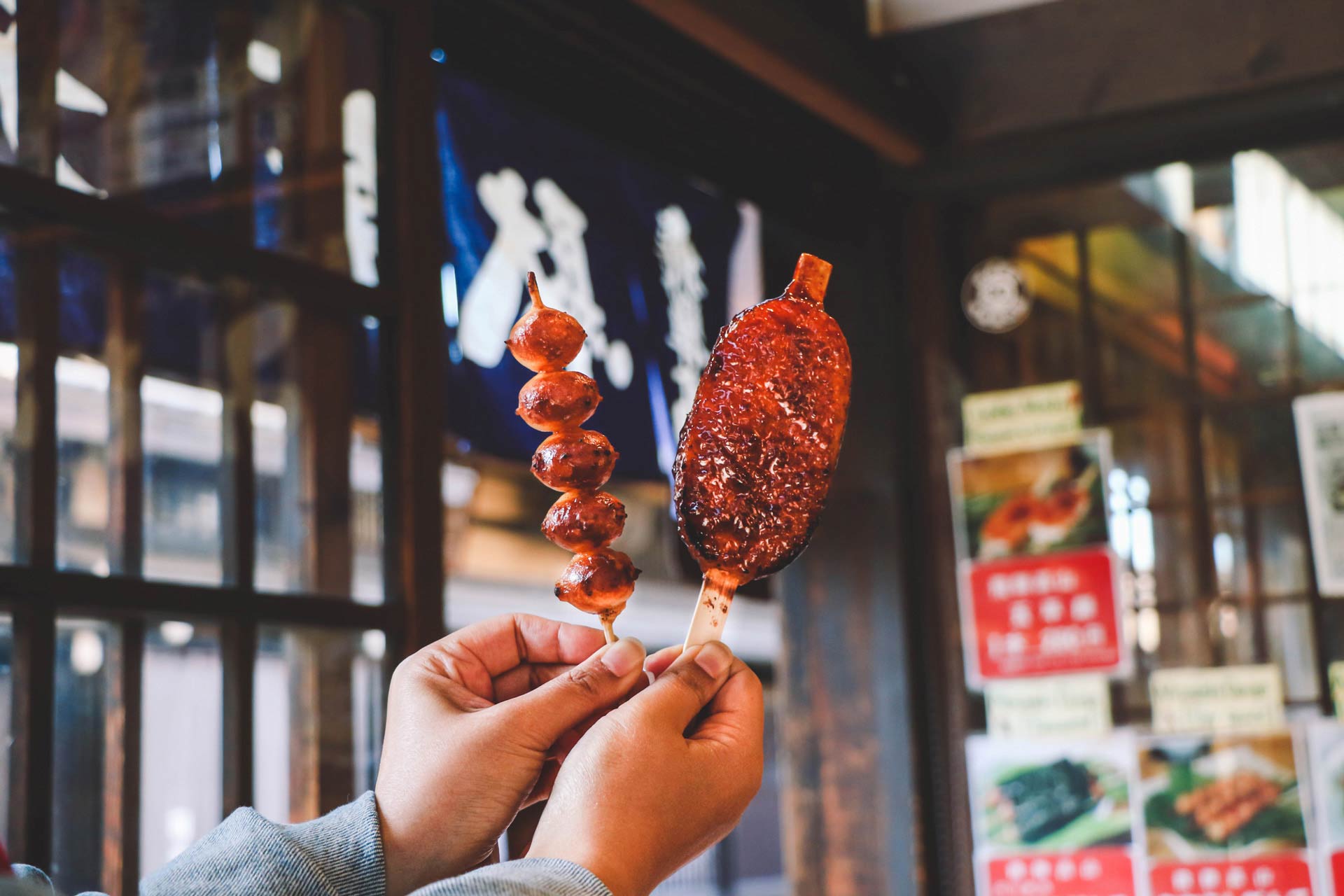
Where to Eat Gohei Mochi & Mitarashi Dango: Akebonya
Located in takayama old town, Akebonya sells both mitarashi dango and gohei mochi – we got one of each. If you have a chance, it’s a good idea to try mitarashi dango and gohei mochi
from a few different places as each shop has a rceipe for the sauce. The great thing about Akebonya is that they sell the sauce separately which you can also buy!
As you may have expected by now, even the ramen at Takayama is different!
Known by the locals as Chuka Soba for its thin and curly noodles similar to those used in Chinese cuisine, Takayama Ramen also differs in taste from traditional Japanese ramen as its soup base is made from bonito flakes and soy sauce. The dish is typically topped off with pork fillet, sprouts and fermented bamboo shoots. While there are plenty of places to eat Takayama ramen in Takayama, it’s important to know that each restaurant’s ramen tastes a little different, with owners adding their own spin to broths.
View this post on Instagram
View this post on Instagram
Where to Eat Takayama Ramen:
For the taste of tradition, try Nakatsubo. As the city’s oldest ramen shop, Nakatsubo is known for selling Takayama’s best Takayama Ramen. It’s both traditional and simple.
Other notable mentions include Mametengu Honten which is a family business that has been running for just over 70 years!
While on most Takayama food guides, you’ll find “hida gyuuman” listed we invite you to also try this fusion-esque alternative!
As one of the more unique street food’s in the area, the best way to describe hida gyuu ootama yaki is that it’s like a giant takoyaki with a mammoth filling. Inside, you’ll find hida beef, small prawns, a quail egg, sprouts and green onion.
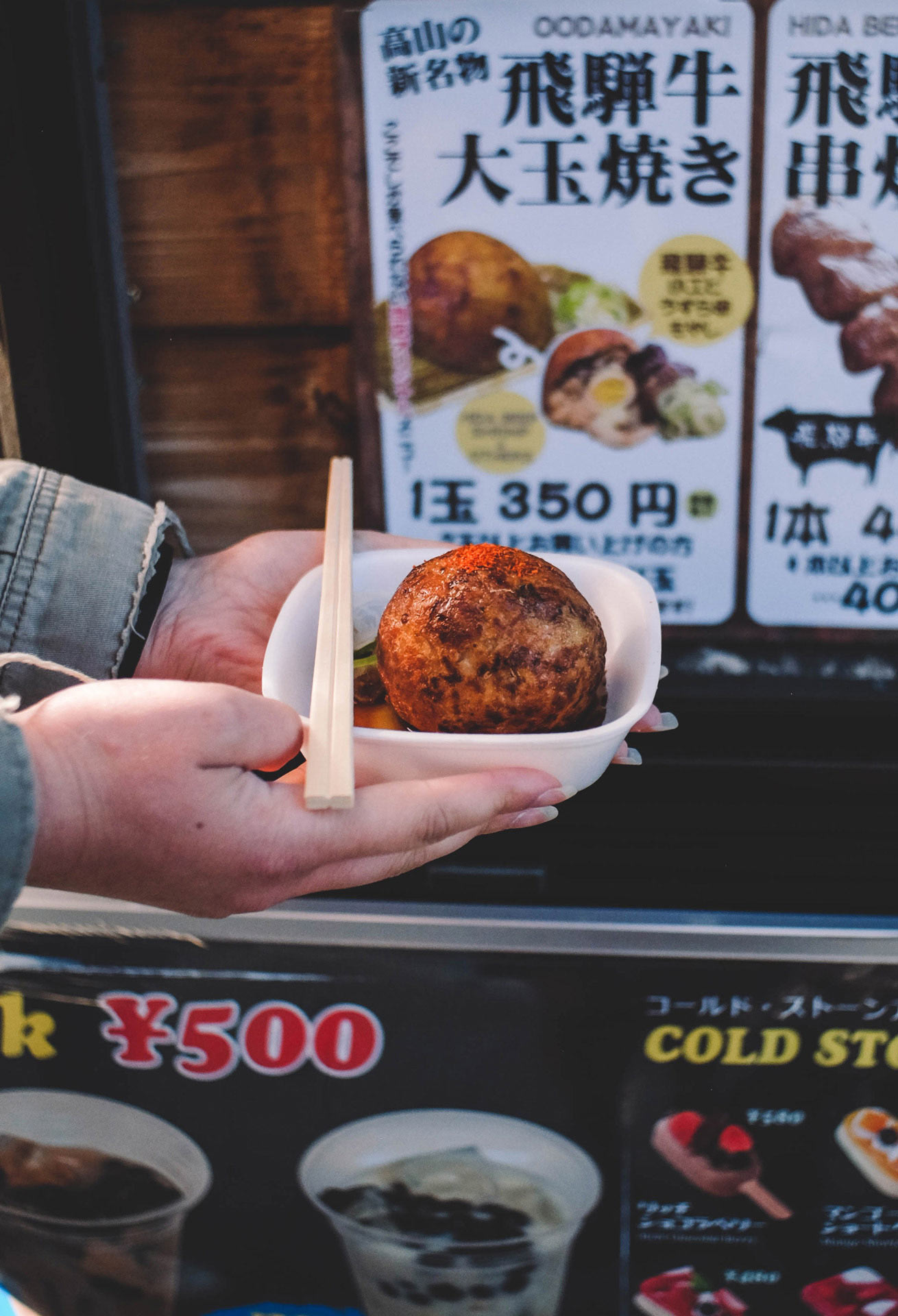
Where to Hida Gyuu Ootama Yaki: 雑貨屋 木の実 (Zakka-ya Konomi)
We believe (but please correct us if we are wrong) that this is the only place that sells hida gyuu ootama yaki. It is by no means a ‘traditional’ food, but rather utilities Takayama’s local foods (such as hida beef) to create a unique and modern street food.
This is the shop’s original recipe so if you see it, be sure to try it!
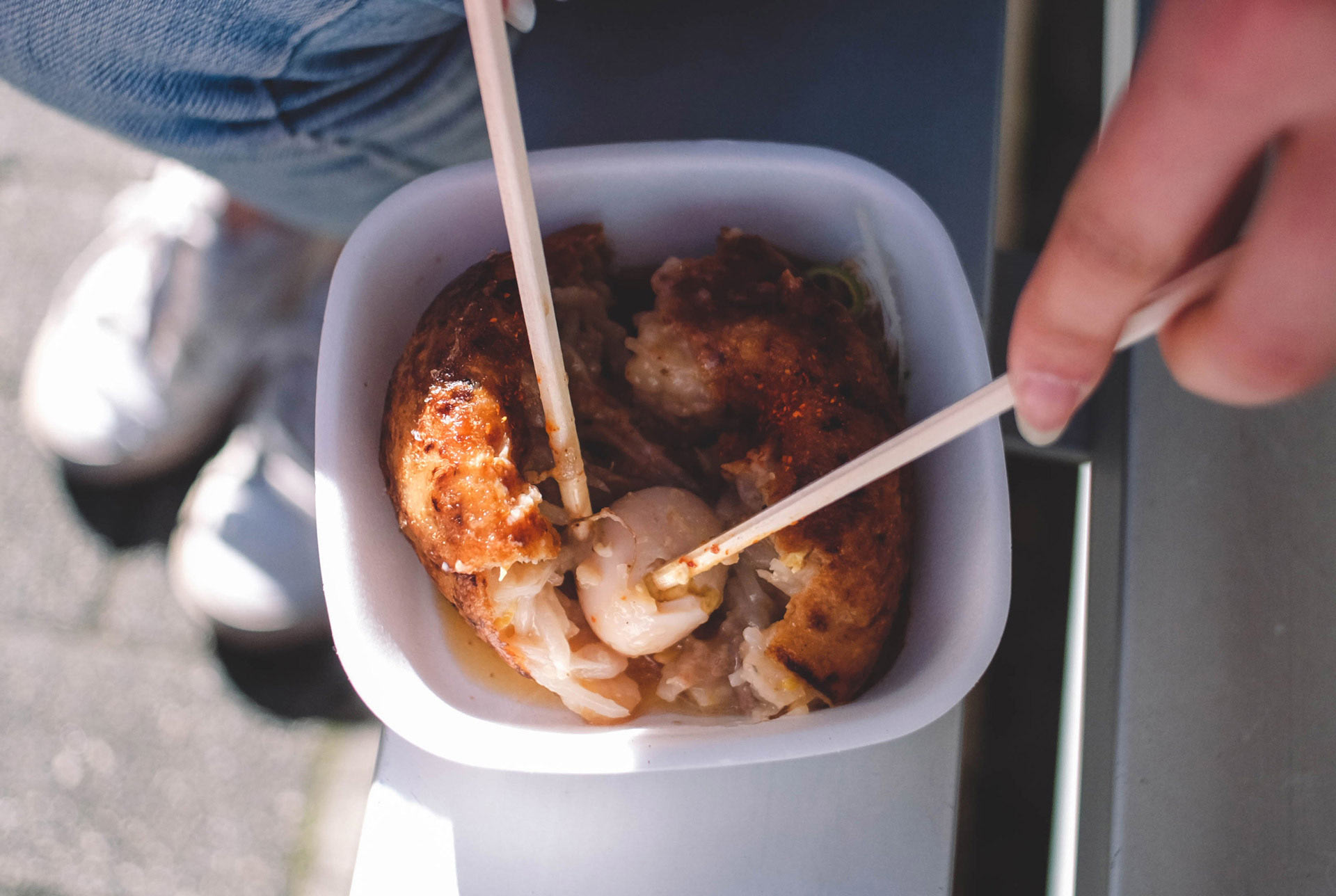



That ALL looks so good! Mmmmm…it’s only 9am here but now I want ootama yaki for lunch!
amago soba looks very unique!